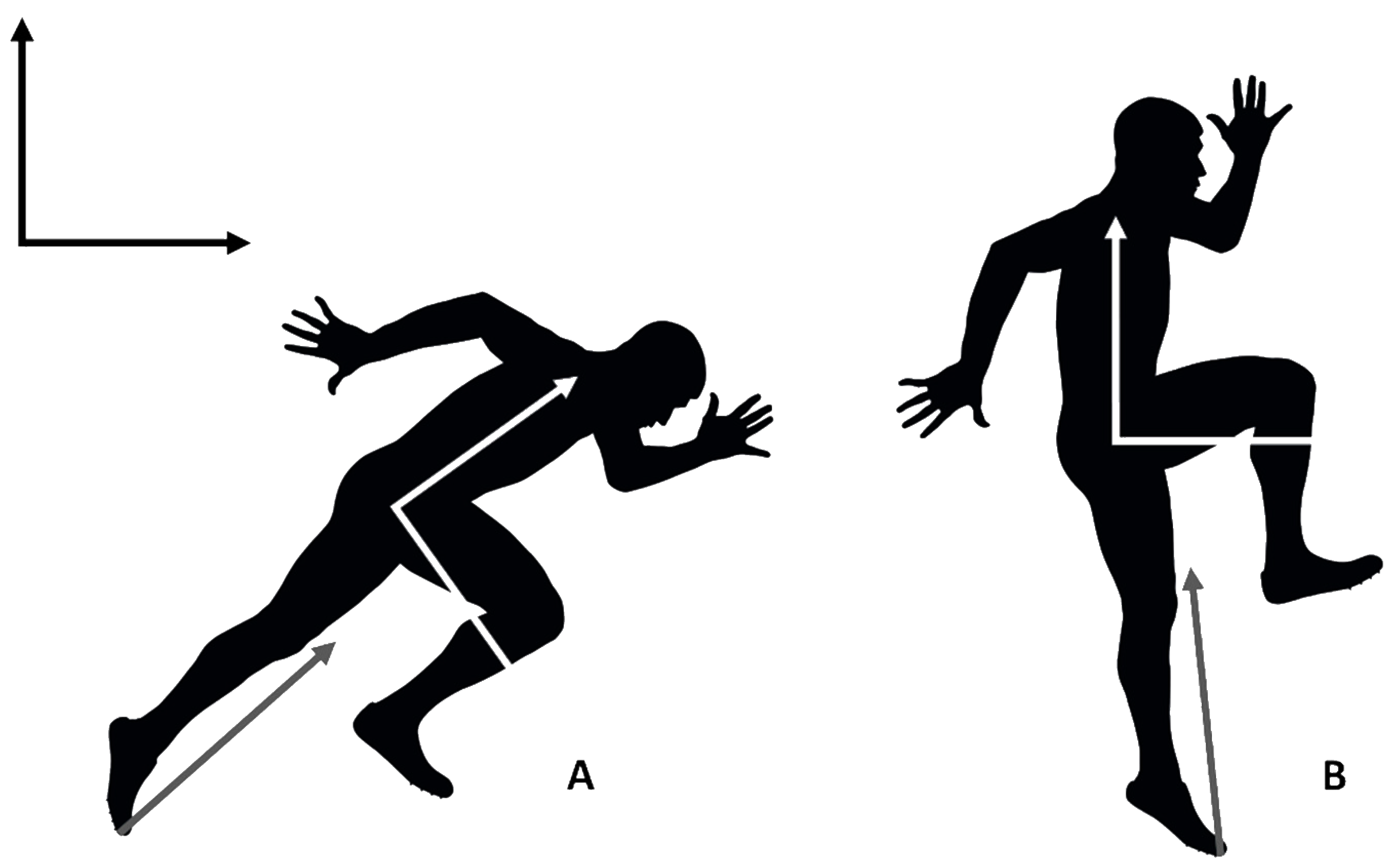This article discusses the existing rationale, literature, and real-world utilization of vertical jump tests for evaluating human movement, capability, and function.
Movement involves force in all 3 directional planes, however, the common misconception is that all planes are created equal. Because we live on Earth we have to account for a little force called gravity, vertical forces are the PRIMARY forces in movement. We weren’t the first to notice that vertical forces are the most correlated with movement. Countless studies have found significant relationships between vertical jump performance and sprint times. For example, a 2005 study out of the New Zealand Institute of Sport discussed the highest correlation to sprint times was the vertical jump [6]. These findings have been supported by several different studies despite utilizing different subjects (female, male, students, football, soccer..) and sprint distances (5 m, 10m, 30m, 40 yds...).

There has been conflicting evidence on the relationship between absolute maximum strength and vertical jump performance in the literature, but when these are evaluated relative to individual body mass (relative strength), there is a much more consistent relationship. The current research points to a significant correlation between jump performance and relative strength values. A 2014 study evaluating strength, vertical jump, sprint, and change of direction found that the strongest correlations with performance measures were obtained relative to body mass [15]. This logically makes sense and is rooted in the basic concepts of human movement; you have to move your own body weight in a dynamic fashion in the desired direction. So it is crucial to possess a minimum level of "relative strength," force production expressed as a percentage of body weight.
A 2007 study and more recently a 2012 paper out of the University of Malaga, reported a significant correlation between vertical jump height and change of direction [1, 3]. In addition, these studies found that the vertical jump test explained 34% and 46-49% of the change in direction test respectively. The authors concluded that these findings were due to the superior ability of the vertical jump to assess the stretch-shortening cycle. This high relationship also makes sense because a vertical jump is just simply a change of direction, and this research states that vertical force application may be a limiting factor in change of direction performance. Previous authors have explained this positive relationship due to GRF required for a good vertical jump. Despite agility runs being a horizontal or lateral change in direction, vertical force accounts for much of the total GRF exerted when an individual contacts the ground to change direction. After all, the primary resistance is still gravity.

The best indicator of an individual's ability to create force is the vertical jump. In a study of college football players, conducted at Cal State Hayward, the vertical jump was shown to be the best predictor of playing ability. In other words, better football players were also the best jumpers. In another 2013 study, these same authors also found that vertical jump was the single best predictor for all baseball players' defensive performances [9]. There are countless research studies showing the correlation of vertical jump (vertical forces) with individuals' health and performance.
The vertical jump test has been shown to be a reliable and valid assessment across multiple different populations, not just athletes and sports performance. For example, a 2020 study found the vertical jump test to be a reliable and valid test with a female population ranging from 18 to 65 years old [3]. Movement is a fundamental necessity for all humans and though athletes are more often assessed, analyzed, and trained, most of these concepts apply to us all. Noting these similarities, practitioners have started to emphasize the importance of strength and "power" in the general population as it relates to health and injuries, including everything from fall risk and Parkinson's disease to cancer and diabetes. A 2018 meta-analysis utilizing data from over 2 million men and women stated that "higher levels of upper- and lower-body muscular strength are associated with a lower risk of mortality in adult population, regardless of age and follow-up period" [8].
The vertical jump is starting to be utilized more and more with populations outside of sport because of the simplicity and practicality of testing. Isokinetic testing has often been utilized as the gold standard but as a recent study states, "vertical jump testing is easy and rapid to implement, whereas isokinetic testing is more challenging, especially because of time constraints (about half an hour vs. a few minutes for VJ)." A 2014 study also found the vertical jump to be more useful at identifying sarcopenia in middle-aged adults (55-75) than a standard leg-press strength test [14]. The primary resistance in all movement is still gravity, and Force production is the foundation of all movement. As a result, the vertical jump is simply the most fundamental way to measure human movement.
- Such a basic test allows practitioners to better separate the movement skill (sprinting, change of direction, throwing) from general physical capability.
- The primary force in all movements, including rotational movements as in baseball, is in the vertical direction.
- The movement is rooted in the basic concepts of human movement; you have to move your own body weight in a dynamic fashion in the desired direction.
- The force plate collects data throughout the entire duration of the jump, which allows us to get strategy measures that describe an individual's movement, not simply quantitative measures of output.
- Reliability of the vertical jump assessment is high, as is the reliability or internal consistency of the variables that Sparta uses
- The assessment itself can take as little as 90 seconds, results are displayed instantly, and the test itself isn't extremely taxing, many people do jump testing on a weekly basis.
Research References:
- Barnes, J. L., Schilling, B. K., Falvo, M. J., Weiss, L. W., Creasy, A. K., & Fry, A. C. (2007). Relationship of jumping and agility performance in female volleyball athletes. Journal of Strength and Conditioning Research, 21(4), 1192.
- Bellicha, Alice, et al. "Vertical Jump on a Force Plate for Assessing Muscle Strength and Power in Women With Severe Obesity: Reliability, Validity, and Relations With Body Composition." The Journal of Strength & Conditioning Research (2020)
- Castillo-Rodríguez, Alfonso, et al. "Relationship between muscular strength and sprints with changes of direction." The Journal of Strength & Conditioning Research 26.3 (2012): 725-732.
- Cherup, Nicholas P., et al. "Power vs strength training to improve muscular strength, power, balance and functional movement in individuals diagnosed with Parkinson's disease." Experimental gerontology 128 (2019): 110740.
- Cowley, Jeffrey C., et al. "Children Who Are Overweight Display Altered Vertical Jump Kinematics and Kinetics From Children Who Are Not Overweight." Pediatric exercise science 1.aop (2019): 1-7
- Cronin, John B., and Keir T. Hansen. "Strength and power predictors of sports speed." J Strength Cond Res 19.2 (2005): 349-357.
- Ditroilo, Massimiliano, et al. "Intra-and inter-session reliability of vertical jump performance in healthy middle-aged and older men and women." Journal of Sports Sciences 29.15 (2011): 1675-1682.
- García-Hermoso, Antonio, et al. "Muscular strength as a predictor of all-cause mortality in an apparently healthy population: a systematic review and meta-analysis of data from approximately 2 million men and women." Archives of physical medicine and rehabilitation 99.10 (2018): 2100-2113.
- Mangine, Gerald T., et al. "Predictors of fielding performance in professional baseball players." International journal of sports physiology and performance 8.5 (2013): 510-516.
- Marques, M., Gil, H., Ramos, R., Costa, A., & Marinho, D. (2011). Relationships between vertical jump strength metrics and 5 meters sprint time. Journal of human kinetics, 29, 115-122.
- Nibali, Maria L., et al. "Influence of familiarization and competitive level on the reliability of countermovement vertical jump kinetic and kinematic variables." The Journal of Strength & Conditioning Research 29.10 (2015): 2827-2835.
- Rolland Y, Kan AV, Benetos A, et al. Frailty, osteoporosis and hip fractures: causes, consequences and therapeutic perspectives. J Nutr Health Aging. 2008;12(5):319–330.
- Sawyer, Donald T., et al. "Relationship between football playing ability and selected performance measures." Journal of Strength and Conditioning Research 16.4 (2002): 611-616.
- Singh, Harshvardhan, et al. "Jump test performance and sarcopenia status in men and women, 55 to 75 years of age." Journal of geriatric physical therapy 37.2 (2014): 76-82.
- Swinton, P. A., Lloyd, R., Keogh, J. W., Agouris, I., & Stewart, A. D. (2014). Regression models of sprint, vertical jump, and change of direction performance. The Journal of Strength & Conditioning Research, 28(7), 1839-1848.
- Walsh, Mark S., et al. "The validation of a portable force plate for measuring force-time data during jumping and landing tasks." Journal of Strength and Conditioning Research 20.4 (2006): 730.
- Wisløff, U., Castagna, C., Helgerud, J., Jones, R., & Hoff, J. (2004). Strong correlation of maximal squat strength with sprint performance and vertical jump height in elite soccer players. British journal of sports medicine, 38(3), 285-288.
